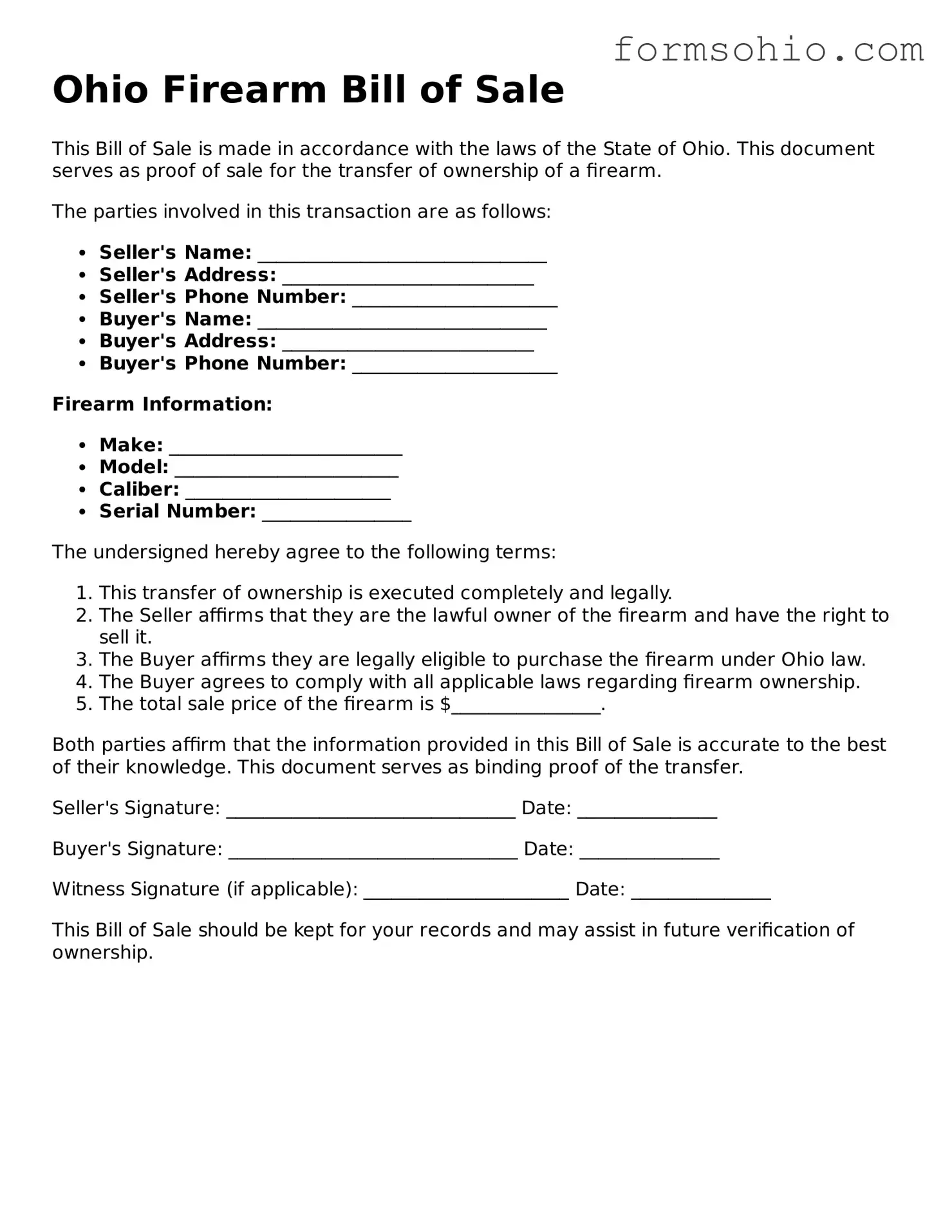Ohio Firearm Bill of Sale
This Bill of Sale is made in accordance with the laws of the State of Ohio. This document serves as proof of sale for the transfer of ownership of a firearm.
The parties involved in this transaction are as follows:
- Seller's Name: _______________________________
- Seller's Address: ___________________________
- Seller's Phone Number: ______________________
- Buyer's Name: _______________________________
- Buyer's Address: ___________________________
- Buyer's Phone Number: ______________________
Firearm Information:
- Make: _________________________
- Model: ________________________
- Caliber: ______________________
- Serial Number: ________________
The undersigned hereby agree to the following terms:
- This transfer of ownership is executed completely and legally.
- The Seller affirms that they are the lawful owner of the firearm and have the right to sell it.
- The Buyer affirms they are legally eligible to purchase the firearm under Ohio law.
- The Buyer agrees to comply with all applicable laws regarding firearm ownership.
- The total sale price of the firearm is $________________.
Both parties affirm that the information provided in this Bill of Sale is accurate to the best of their knowledge. This document serves as binding proof of the transfer.
Seller's Signature: _______________________________ Date: _______________
Buyer's Signature: _______________________________ Date: _______________
Witness Signature (if applicable): ______________________ Date: _______________
This Bill of Sale should be kept for your records and may assist in future verification of ownership.
